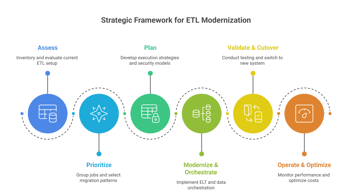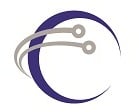
An AI fabric unifies data, models, features, metadata, vector stores, and governance into a single, intelligent operating layer. Think of it as the connective tissue that transforms scattered data and AI stacks into a coherent system capable of delivering trustworthy, scalable AI across the enterprise.
What Is an Enterprise AI Fabric? (And Why It Matters Now)
%20-%20visual%20selection.png?width=2005&height=1349&name=What%20Is%20an%20Enterprise%20AI%20Fabric_%20(And%20Why%20It%20Matters%20Now)%20-%20visual%20selection.png)
1. Data Pipelines
2. Feature Stores
3. Model Catalogs
-
ML models
-
LLMs and fine-tuned variants
-
prompt templates
-
RAG pipelines
-
agent behaviors
4. AI Governance
-
access & security
-
privacy controls
-
lineage tracking
-
bias detection
-
compliance approvals
5. Vector & Retrieval-Augmented Generation (RAG) Operations
6. Deployment & Observability
With AI workloads growing exponentially, enterprises need more than just data organization—they need data activation, managed end-to-end, with built-in governance.
Data Fabric vs. AI Fabric: The Architectural Evolution
-2.png?width=1920&height=1080&name=Untitled%20design%20(6)-2.png)
AI fabrics unify data + models + features + governance into a single system.
How Major Vendors Are Converging into Enterprise AI Fabrics
The ecosystem is rapidly aligning toward AI fabric capabilities.
Here’s how major cloud and enterprise platforms fit into the trend:
-
Snowpark ML for unified model lifecycle
-
Cortex AI for LLMs and RAG
-
Native vector search
-
Horizon for unified governance across data and models
Google BigQuery + Vertex AI
-
BigQuery ML with in-warehouse modeling
-
Vertex AI Feature Store
-
Dataplex governance fabric
-
Model and pipeline registries tied to metadata
Databricks
-
Unity Catalog governing data + features + models
-
Simple model serving and vector search
-
Delta Live Tables for governed pipeline orchestration
-
“Lakehouse AI” unification across data + AI ops
Azure Synapse & Microsoft Fabric
-
Purview unifies governance across data + AI
-
Synapse pipelines and notebooks feed Fabric AI workloads
-
Model cataloging and LLM deployment tools through Azure ML
Informatica
-
CLAIRE® AI engine for intelligent metadata and AI-assisted governance
-
Enterprise-scale data catalogs
-
Automated lineage across datasets, apps, and cloud platforms
-
MDM + 360 apps feeding reliable data into AI systems
-
Native integrations with Snowflake, Databricks, BigQuery, and Salesforce
In many enterprises, Informatica becomes the governance backbone of an AI fabric.
Salesforce
-
Einstein 1 Platform and unified metadata graph
-
Data Cloud for harmonizing enterprise data for AI personalization
-
Inbuilt governance and security for regulated industries
-
Native LLM integration and retrieval over CRM/ERP data
Salesforce essentially becomes a domain-specific AI fabric for customer, sales, and service intelligence.
.png?width=2576&height=1307&name=_-%20visual%20selection%20(58).png)
1. Ownership Has Shifted from Data → Data + Features + Models + Prompts
Governance must include:
-
feature definitions
-
training datasets
-
prompt versions
-
fine-tuned LLM checkpoints
-
vector embeddings
-
agent logic
Traditional data governance is no longer enough.
-
reduce pipeline and model duplication
-
rationalize GPU usage
-
unify model hosting
-
predict inference cost
This shift is critical as AI spend grows exponentially.
3. Compliance Must Be Automated, Not Manual
-
access policies
-
bias & drift detection
-
audit-ready lineage
-
model approval workflows
This is essential as AI regulations tighten in healthcare, BFSI, public sector, and retail.
4. Build vs. Buy Choices Are Evolving
-
feature stores
-
registries
-
governance layers
-
vector search
-
LLM hosting
Instead of building from scratch, IT leaders must orchestrate these components into a unified AI fabric strategy without creating platform lock-in.
How to Begin Your AI Fabric Journey (Mini Runbook)
Step 1 — Inventory Your AI Landscape
-
datasets
-
feature stores
-
pipelines
-
vector DBs
-
deployed models
-
prompts + templates
-
governance workflows
Step 2 — Consolidate Metadata & Lineage
-
features
-
datasets
-
models
-
prompts
-
RAG flows
-
business apps (CRM, ERP, MDM)
Step 3 — Establish Policy-as-Code Governance
-
approvals
-
access
-
PII policies
-
bias checks
-
model risk controls
Step 4 — Standardize Feature + Model Lifecycle
-
versioning
-
deployment workflows
-
evaluation frameworks
Step 5 — Add Cost Observability
-
GPU utilization
-
inference cost per call
-
model drift events
-
RAG latency and accuracy
%20-%20visual%20selection%20(2).png?width=2592&height=1054&name=How%20to%20Begin%20Your%20AI%20Fabric%20Journey%20(Mini%20Runbook)%20-%20visual%20selection%20(2).png)
-
40%+ reduction in pipeline duplication
-
Faster model deployment (days vs. weeks)
-
Up to 60% automated governance coverage
-
Predictable inference and GPU costs
-
Fewer model drift incidents
Common Pitfalls to Avoid
-
Treating AI fabrics as a tooling decision instead of an operating model shift
-
Applying legacy data governance to AI workflows
-
Relying exclusively on monolithic LLMs
-
Underestimating inference cost variability
-
Not aligning data, AI, security, and compliance teams
Analyst Insights
Gartner
Source: Click here
McKinsey
Source: Click here
IDC
Source: Click here
Final Thoughts
Ready to Build Your AI Fabric?

Blog Post by PDI Marketing Team
Pacific Data Integrators Offers Unique Data Solutions Leveraging AI/ML, Large Language Models (Open AI: GPT-4, Meta: Llama2, Databricks: Dolly), Cloud, Data Management and Analytics Technologies, Helping Leading Organizations Solve Their Critical Business Challenges, Drive Data Driven Insights, Improve Decision-Making, and Achieve Business Objectives.




